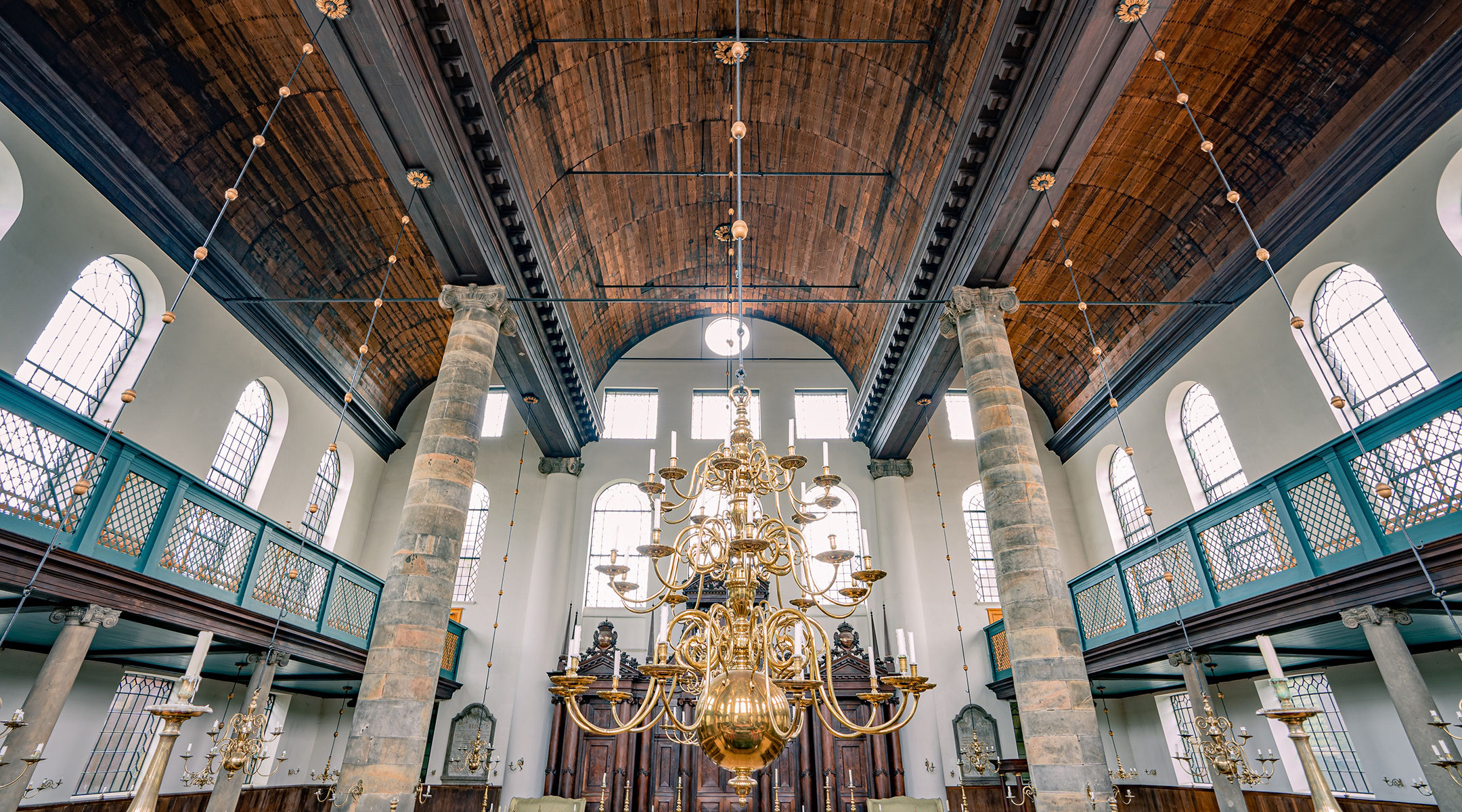AMSTERDAM (JTA) — Located in what used to be this Dutch city’s Jewish neighborhood, its Jewish Cultural Quarter — a group of museums and other institutions situated within a few blocks of each other — packs centuries of European history into an area half the size of Times Square.
It includes the Jewish Historical Museum; a Jewish Children Museum, the first of its kind in Europe; the Portuguese Synagogue, a beautiful 17th-century building that still functions as a house of worship; the Ets Haim library, located underneath the Portuguese Synagogue; the Hollandse Schouwburg theater, which occupying Nazis used to round up Jews during the Holocaust; and other monuments. There’s also a $27 million national Holocaust museum that is being renovated and scheduled to reopen in 2022.
Before the coronavirus pandemic, the cultural quarter drew over 350,000 visitors each year, acting as a vibrant portal into Jewish life and culture for tourists and locals alike. The Children’s Jewish Museum had received thousands of visits by Dutch elementary school students for day trips. The main museum houses the world’s two priciest Hanukkah menorahs and is made up of what used to be four Ashkenazi synagogues used before the Holocaust.
Now there’s a fear that when the cultural quarter reopens, it won’t have the same impact in multiple ways.
The Jewish Cultural Quarter is scheduled to reopen on June 1, and its staff is figuring out the format. Ticket sales — entry costs about $20 and is valid for all the institutions there — will be done online exclusively and in advance, essentially ending walk-ins.
Whereas the area in the center of Amsterdam had about 360,000 visits in 2019, “if we get 135,000 visits in 2020, then that’s a good outcome,” said Emile Schrijver, the director of the quarter’s umbrella organization that formed in 2012. “That’s just being realistic.”
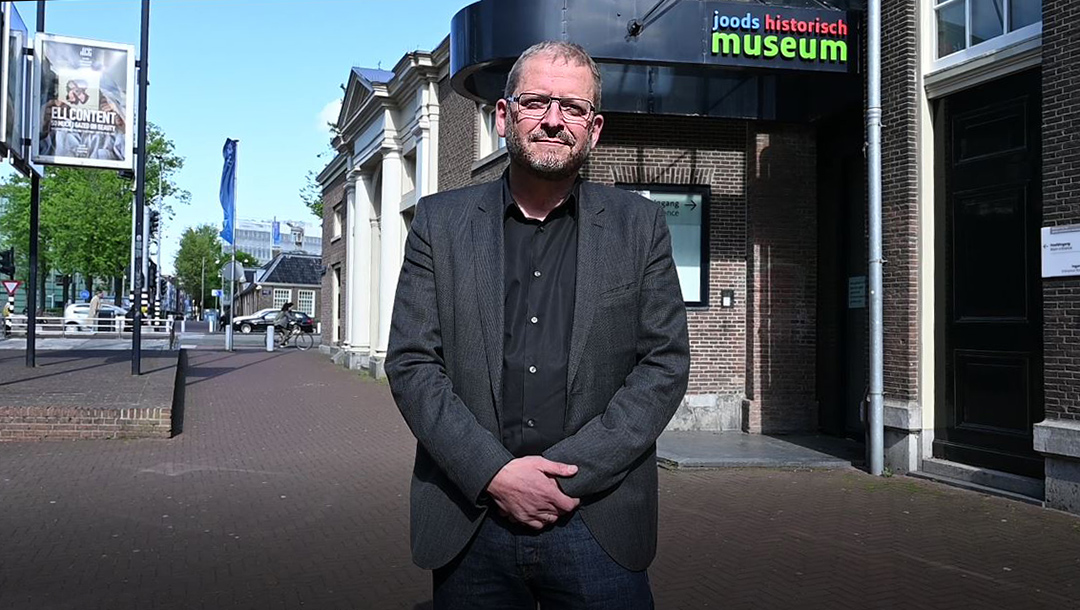
Emile Schrijver, director of the Jewish Cultural Quarter, stands in the area located in the center of Amsterdam, May 4, 2020. (Cnaan Liphshiz)
The cultural quarter’s core interactive framework also stands to change. The Jewish Museum developed a philosophy called “I ASK,” which encourages visitors to start conversations with guides rather than act as passive onlookers. In 2015, the Dutch museology magazine Museumpeil profiled the pioneering method and argued that it should be copied.
Yet the model may need to be adapted for post-lockdown reality, Schrijver conceded.
Some areas within the cultural quarter, like the community treasures display at the Portuguese Synagogue, are too tight to allow for mandatory 5-foot social distancing. Beyond changes to tourist routes, visitors will be forced to wear face masks and avoid standing in gatherings.
“I miss walking around, hearing people talking about what they’ve seen in the cafeteria, praising it or complaining, whatever,” Schrijver said. “I miss the vitality and interaction of this place.”
His voice echoed in the now-empty museum in an interview earlier this month.
“We’ve done a lot online and will continue, but to me that’s not the same,” Schrijver said.
The cultural quarter was a way into Judaism for Anne-Maria van Hilst, a 32-year-old tourist guide from Amsterdam who converted over a decade ago to the religion. She said Judaism’s tradition of asking questions appealed to her.
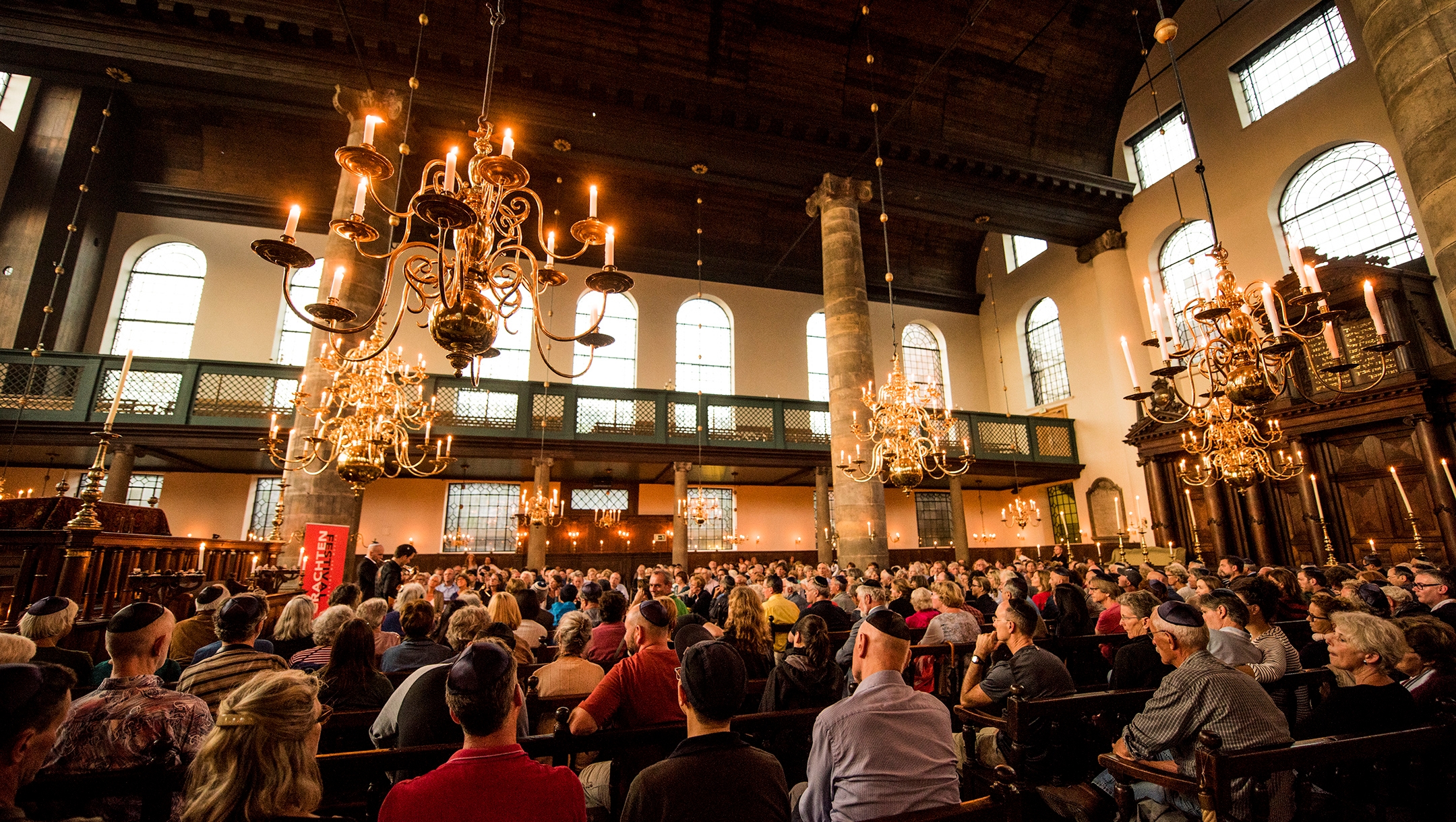
Concert-goers attend a performance at the Portuguese Synagogue, Aug. 17, 2017. (Cnaan Liphshiz)
Van Hilst began attending the synagogue of the Liberal Jewish Community here out of interest when she was 13, before her conversion. But the accessibility and diversity of the various institutions that make up the cultural quarter allowed her to develop her Jewish identity gradually, and in a way that felt comfortable, she said. It later even helped determine her career choices.
“I started coming to the Children’s Jewish Museum as a teenager,” she recalled. “I liked how they always had staff there whose job it was to answer questions. It wasn’t just a museum where you look at exhibits, it was a place of dialogue.”
But, van Hilst added, she may have asked the staff too many questions.
“I’m not sure they liked me as much as I liked them,” she said.
As she matured and her knowledge of Judaism deepened, van Hilst “graduated” to the main Jewish museum. It helped her decide to study Jewish history at the University of Amsterdam. During her studies, she gained access to Ets Haim, which is not open to the general public except for guided tours of very small groups every few weeks, as well as to scholars for research.
“In many ways, it’s there that I found what it means to be Jewish,” she said of the library.
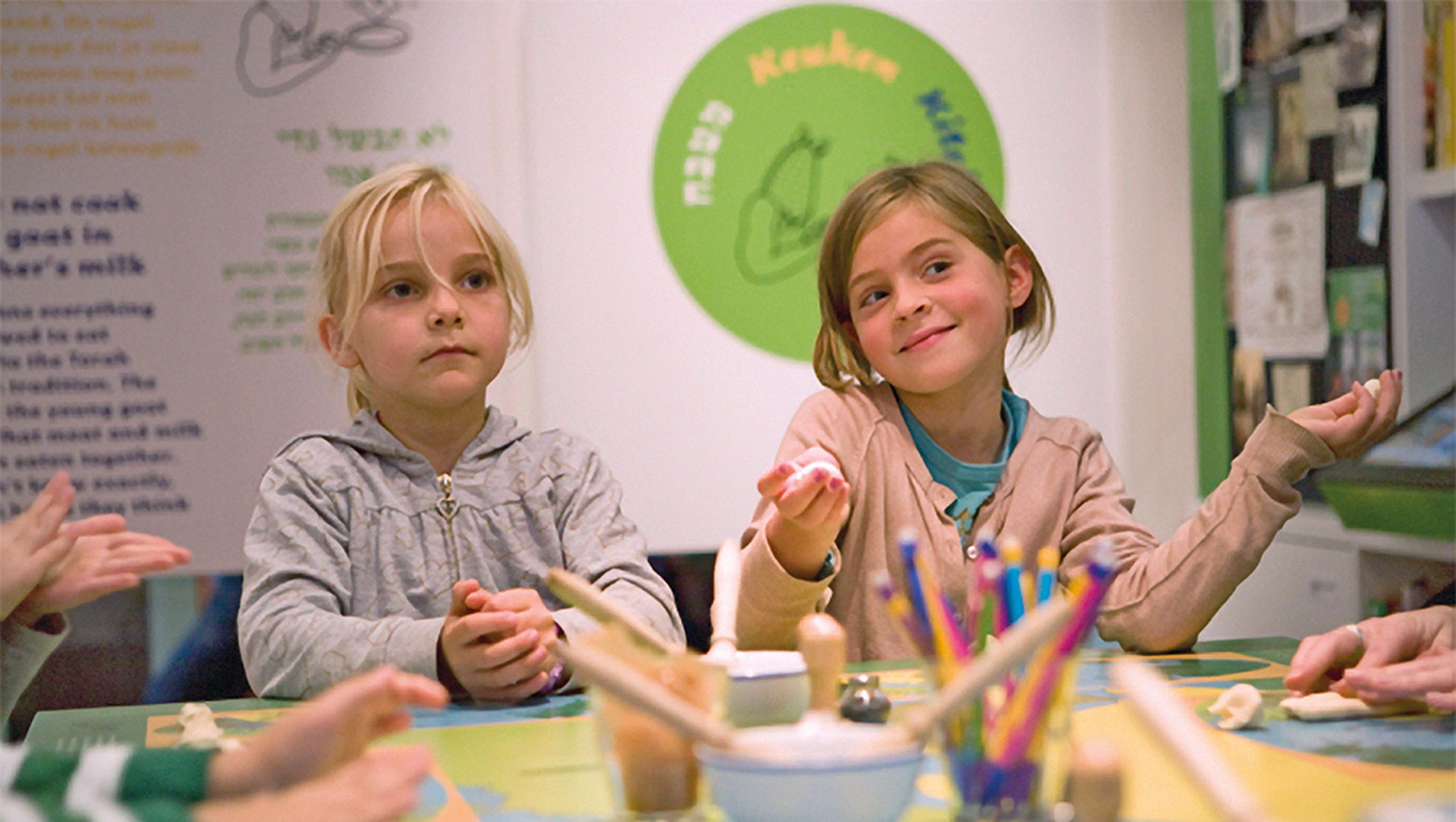
Children learning about Judaism at the Children’s Jewish Museum in Amsterdam, Sept. 25, 2008. (Ruud van Zwet)
Last week, walking past the now-deserted cultural quarter, van Hilst lamented the need to keep it closed — precisely at a time when she believes it’s particularly valuable.
“Especially when anti-Semitism is rising, when conspiracy theories about the Jews and the virus are flourishing, the Jewish Cultural Quarter needs to open and tell Judaism’s real story,” she said.
The quarter has several dozen employees and an annual turnover of $10 million. Annual funding from the Dutch Education Ministry covers about half its budget. The rest comes from ticket sales, more than 200 events yearly, shops and the cafeteria, as well as donations and nongovernment subsidies, said Schrijver, whose father was Jewish.
The Anne Frank House, which is not part of the cultural quarter but received over a million visitors last year, is also dealing with a drastic reduction in visitors because of the virus.
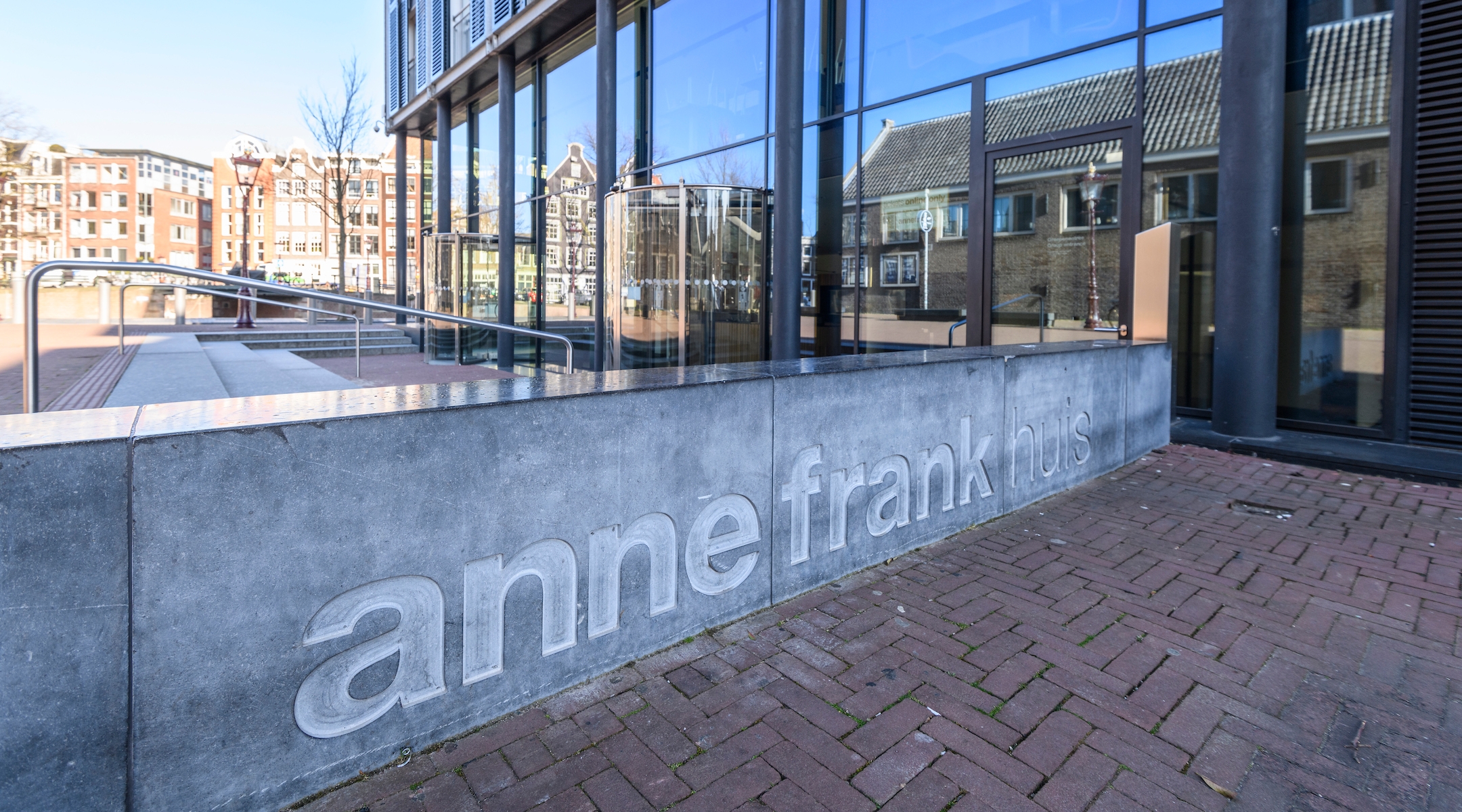
A view outside the closed Anne Frank House Museum in Amsterdam, March 31, 2020. (Sjoerd van der Wal/Getty Images)
The museum, which was built where the murdered teenage diarist’s Jewish family hid for a time from the Nazis, is housed in a small annex with narrow doorways and cramped spaces. The architecture is part of the reason it has been so successful at conveying the feeling of confinement, but it also complicates keeping up the mandatory 5-foot social distancing rule, its director Ronald Leopold told AT5 last month.
The Anne Frank House dispensed with walk-ins years ago because of high demand, and ticket sales occur weeks in advance online. Before the pandemic, it allowed in 78 visitors every 15 minutes. But after June 1, the number of visitors who will be let in daily will be reduced by 80 percent, Leopold said.
Both the cultural quarter and the Anne Frank House have adapted to the online quarantine era. The Anne Frank House rolled out a series of vlog posts by an actress who looks like the diarist. The quarter has been giving virtual tours on social networks and livestreamed its annual Open Jewish Homes project in which people who live in Holocaust victims’ homes invite visitors to explore them and the former residents’ stories.
Other online tours have involved Dutch Jewry’s golden age in the 17th century, when the Portuguese Synagogue was built, and a showcase of the colorful art of the Dutch-Jewish painter Eli Content.
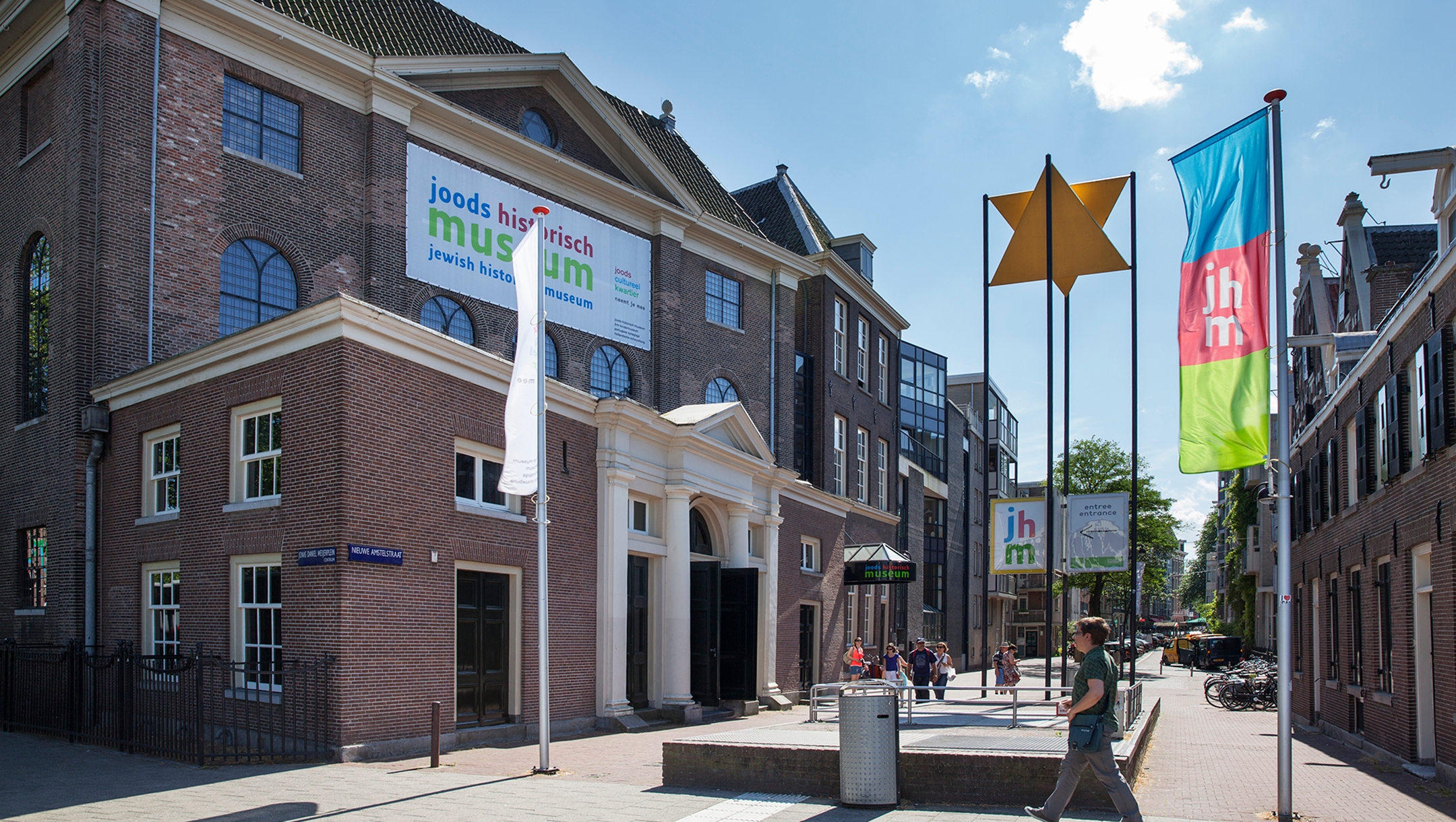
A man walks by the offices of the Jewish Cultural Quarter, Sept. 25, 2008. (Marijke Volkers)
Van Hilst got to visit the Jewish Cultural Quarter earlier in the lockdown, when she was invited to give a virtual tour of the Portuguese Synagogue.
“I didn’t expect it, but it was a very special feeling to be there almost all alone — it’s usually so full of people. It’s even more majestic when it’s quiet,” she recalled.
But it was also deeply melancholic, van Hilst said.
“It brought home how people can’t hear the story the Jewish Cultural Quarter has to tell, among many other things we can’t do,” she said. “It breaks my heart.”
JTA has documented Jewish history in real-time for over a century. Keep our journalism strong by joining us in supporting independent, award-winning reporting.
